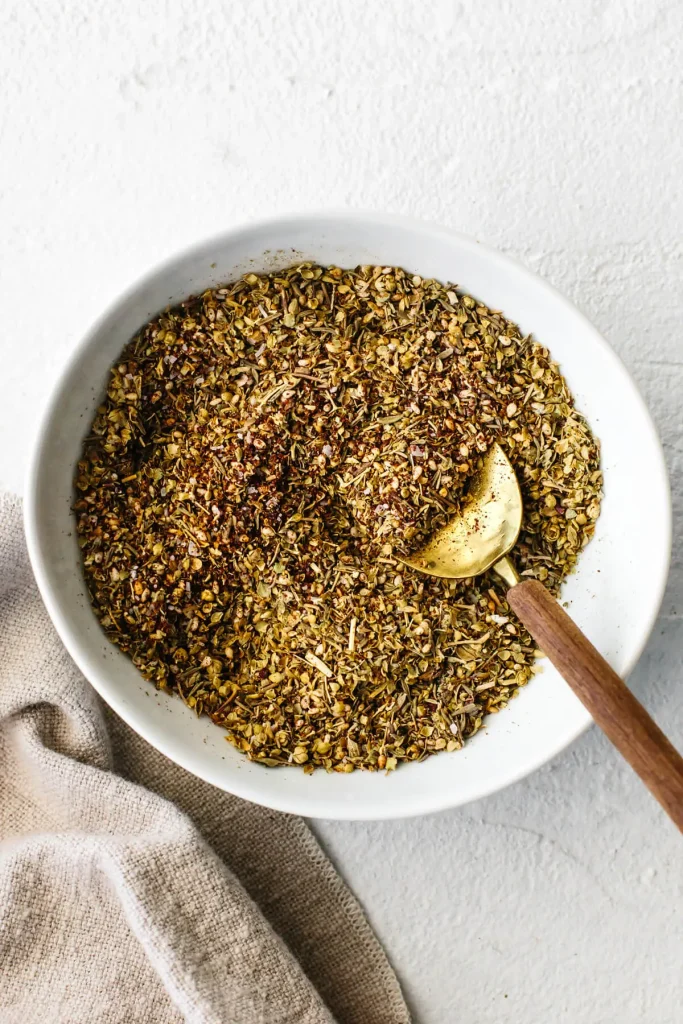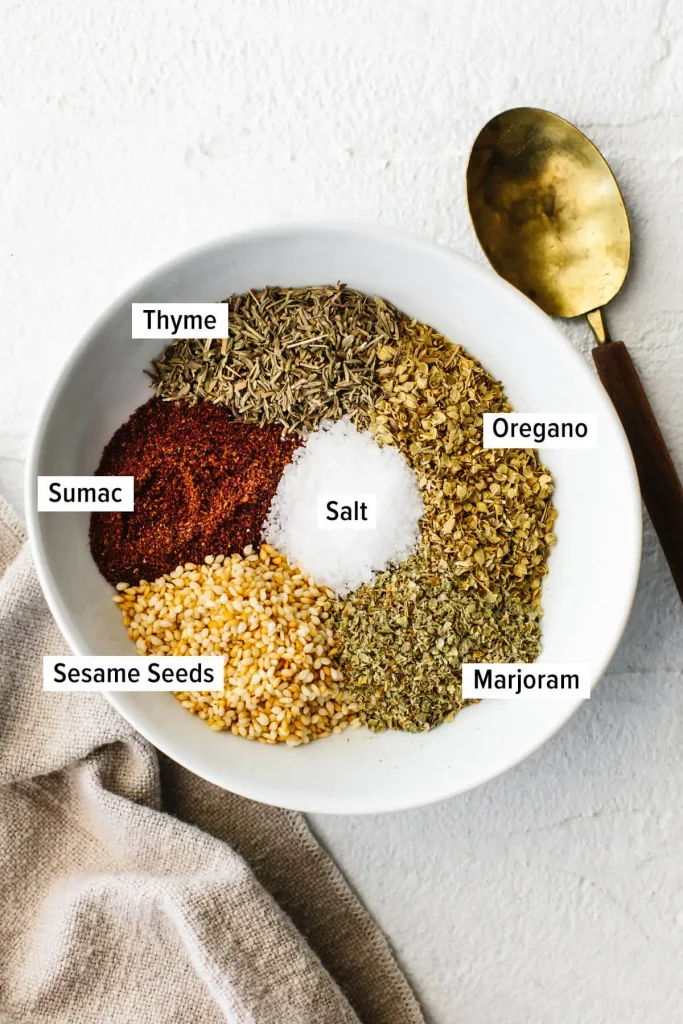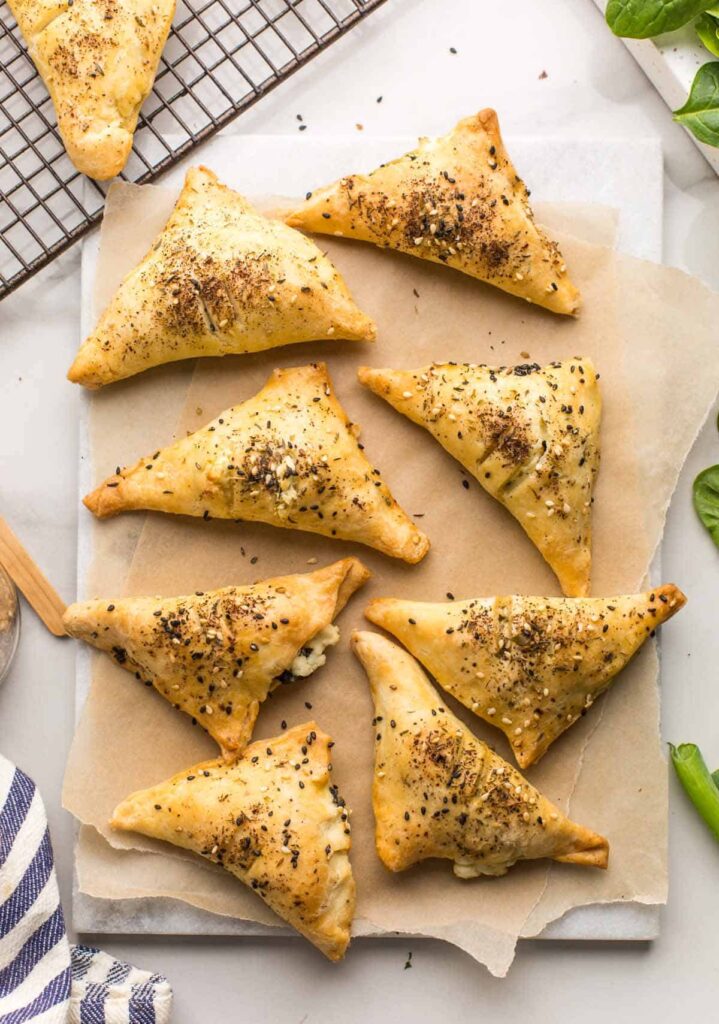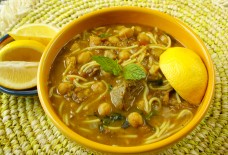The History of Zaatar And a Zaatar Cheesy Delight Recipe
By: Menal Elmaliki / Arab America Contributing Writer

What is Zatar?
Zatar is a combination of spices and herbs that comes from the Middle East, and it is trendy in the Mediterranean region. Its significance lies in its popularity; it is used in almost everything. Zatar is an integral part of Arab culture, used in bread and pastries- have you ever heard of Zatar croissants?

Zatar is as popular in the region as ketchup is in America, and to those who aren’t familiar, it is a combination of ground dried thyme, oregano, marjoram, ground sumac, toasted sesame seeds, and salt. The blend is a whole experience with fragrant and interestingly delicious, salty, tangy, zesty, and toasty notes.
“The result is a mixture with a strong, sharp fragrance that has clear nutty notes. The sumac gives it a lemony flavor that balances well with the other strong flavors in the blend. Regional variations may add other ingredients to the mix like orange zest or dill.”

Why is Zatar Special?
Zatar is special because of the thyme that is used, the wild thyme is named Thymus Capitates and it is found in the hills of the Levant, the Mediterranean Middle East. In parts of Palestine, Syria, and Lebanon, zatar is used in a popular bread dish, manakeesh, and is eaten with olive oil.

Zaatar is a herb and condiment used in North African, Middle Eastern, Greek, and Turkish cuisines. It is used to flavor bread, meat, salads, pastries, and dips such as hummus and labneh- it is quintessentially the butter to one’s bread. There are different varieties of zataar blends, some blends include sumac berries giving their red hue, and others contain cumin, coriander, and fennel seed. Although everyone has an opinion on the most authentic and best zaatar mix, it varies by region and even “shop to shop and home to home.”
Heath Benefits of Zaatar
Zaatar traces back to biblical times and has coined the nickname brain food. As early as the 12 century, this unique blend of spices and herbs was prescribed to patients as a remedy and cure for a variety of ailments such as colda, indigestion, flatulence, congestion, and it was thought to eliminate internal parasites. In medieval texts of the region, za’tar was believed to also cure bad breath and in fact today “products like Listerine include thymol, which is a derivative of the same type of plant.”
:max_bytes(150000):strip_icc()/20221506-zatar-MaiKakish-Hero-7b4e527ef34146cdbb4f3bc9e14f3194.jpg)
In modern Palestine, zaatar is encouraged to be eaten in the morning because of the belief it makes the mind alert. According to modern studies and research, zatar has health benefits, it helps reduce heart disease and prevent diabetes. The sumac is said to be able to lower blood glucose and prevent or reduce the chance of dementia.
It’s History
Little is known about Zaatar’s history despite its usage in medieval medicine. Zaatar dates back to Ancient Egyptian times; archaeologists have found remains of the herb spice in the tomb of King Tut. In medieval times, wild thyme was a token of bravery, and ladies would give their chosen knight an embroidery of a bee hovering over a spring of thyme. “Indeed, thyme and bees have long been associated, and the honey made from bees that feed on thyme pollen has long been prized for its sweetness and fragrance.” The reality, little is known because Zaatar and the obscurity of its history only add to its “allure.”

From the tombs of King Tut to curing bad breath to becoming a token of bakery and love, historically and culturally rich zaatar has gained international popularity and it is now used in parts of Europe and America. Here is a simple recipe that allows you to taste the uniqueness and richness of the Mediterranean Arab region.
Savory Zaatar Pastries That Will Please Any Crowd
Ingredients
- Frozen Pyllo dough or pastry dough (both will give a different texture)
- 2-3 tablespoons Zaatar mix
- Mozzarella cheese (use any cheese of your choice)
- Syrian cheese or akawi cheese
- Olive oil
- 1 egg for wash
- 2-3 tablespoons cream cheese
- 1 jalapeno (optional)
Preparations

- Defrost the phyllo dough or puff pastry.
- Prepare the cheese by shredding and mix it with zataar, sumac, and any herb of your choice such as fresh coriander cilantro, parsley, or mint.
- Stuff each triangle with one tablespoon of the mixture, wash the sides with egg wash. Once finished, seal by pressing tightly and pressing with a fork to create the lines like you see in the picture. If you are using phyllo dough there is no need to press with a fork just seal the edges.
- Cover with egg wash and bake at 375 degrees for 15- 25 minutes (be sure to keep an eye on it, the bake time will vary).
- You’ll know when it’s ready when it has a nice browning, remove from oven and allow it to cool for 10 minutes before eating.
Check out Arab America’s blog here!









